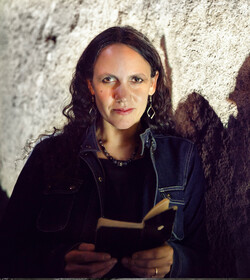Battle of the Somme
Stay better informed and get access to collectors info!
| # | Track | Duration | |
|---|---|---|---|
| 1. | Part 1 | 16:17 | |
| 2. | Part 2 | 11:00 | |
| 3. | Part 3 | 13:31 | |
| 4. | Part 4 | 10:35 | |
| 5. | Part 5 | 16:01 | |
| 67:24 |
Part one begins as an orchestral buildup slowly rising in intensity for the first two minutes of the piece, finally reaching a climatic point with a truly beautiful motif that can only be described as majestic and stunning. Both strings and woodwinds seem to perform the theme flawlessly. This short motif is followed by intriguing passages of woodwind ostinatos that seem to keep the images and movement in place without drawing too much attention to the music. Some of the passages that will follow — particularly in the middle of this track — will contain orchestrations reminiscent of those used by John Williams and Bruce Broughton. After ending in a somewhat majestic tone, the piece dissolves and transforms into a different second half. The music acquires a tenser undertone with constant string tremolos and timpani rolls that eventually revert to the charming motif from the beginning.
When Part two begins, the somewhat cheerful tonality at the beginning surely gives the audience a sense of joy. Nonetheless, Rossi is very careful and tries to abstain from deliberately stirring emotions from the listeners. In reality, the images on screen speak for themselves, sometimes complicating the association between the melodies and harmonies from Rossi’s score with the brutality depicted. Much of the rest of this track contains wonderful solo woodwind and string passages that are not necessarily dependent on single melodies or memorable motifs. The real focus always seems to be a flowing underscore with orchestral evolvement that never sounds monotonous.
Part three starts with a slow, uncanny buildup that gradually develops within a suspenseful harmonic modulation, eventually transitioning to more of a woodwind driven arrangement. The rich harmonies and intriguing flute parts dominate some portions of this track. More importantly, the elaborate arpeggios and woodwind tones keep the music flowing and interesting throughout the whole piece. Not surprisingly, Part four seems to revolve around a loop of string lines for the first three to four minutes, while the woodwind section continues to dominate the aural spectrum with admirable performances. However, the elegance of the horn motif introduced in this track becomes the focal point for the whole movement. This evocative motif does not attempt to overstress any particular emotion, but will certainly be perceived as heartening.
Part five — the last of the tracks — contains music that is never sappy or overdramatic, evolving magnificently well throughout a 16 minute time frame. The trumpet passages seem to be executed within the best possible instrumental range, often reminding the listener of the late Jerry Goldsmith and his arrangements for this instrument. Starting at about nine minutes, the Philharmonia Orchestra outshines all other performances by playing a sequence of exquisite notes that conform to a single, radiant passage. At the end, inevitable as it may seem, the true and pure war undertone finishes the piece in a grandiose, yet gracious way.
Rossi’s masterful knowledge of orchestration is evident from the very start of the CD, never allowing for a dull moment in the music. Her orchestrations are on par with those of the great Hollywood composers. The music is brilliantly written with very little weaknesses. Perhaps the dryness of the string tremolos and timpani rolls for the more suspenseful parts in the beginning can be perceived as weaker parts, but make no mistake; Rossi certainly has a very keen sense of instrumentation even in the slower movements. Undoubtedly, the music deserves nothing less than a 10 out of 10 rating. Nevertheless, as a soundtrack and album by itself, the five-part track division can be quite inconvenient for listeners. Yes, the tracks were written to fit the movie reels, but the tracks average about 12-13 minutes in duration, making the task of locating a particular motif or passage rather difficult. Having said that, this is a truly breathtaking score that will positively influence other young composers. Incredibly well written and performed, Rossi’s score for The Battle of the Somme was among the best of 2008.
Interview Laura Rossi
Added on Wednesday, April 12, 2023 Posted by Tim Horemans
Filmmusicsite.com had the opportunity to talk to composer Laura Rossi
Laura Rossi is a composer for film, TV and concert music. Her music has been described as ‘hauntingly atmospheric with emotional depth and beauty’ Her credits include Battle of the Somme, London to Brighton, Song for Marion, BFI Silent Shakespeare, The Cottage, Hurricane and ITV 6-part drama Redemption. In 2016-17 one hundred orchestras worldwide performed her score, to the UNESCO listed Battle of the Somme film. Watched live by over 37,000, performed by 4,200 musicians, and televised live on BBC1 with the BBC Symphony Orchestra.
Laura is also lecturer for film music at the London Film Academy and Guildhall School of Music and regularly gives masterclasses about film composition.
In this new episode of Composer Talk Laura talks about working on the score to The Battle of Somme. How it was working on this UNESCO listed film. She also talks about Redemption, a score she did for the Irish 6-part ITV tv show. Her daughter wrote a song for that show.
So check out this new Composer on our website or on Spotify
Enjoy listening!!



